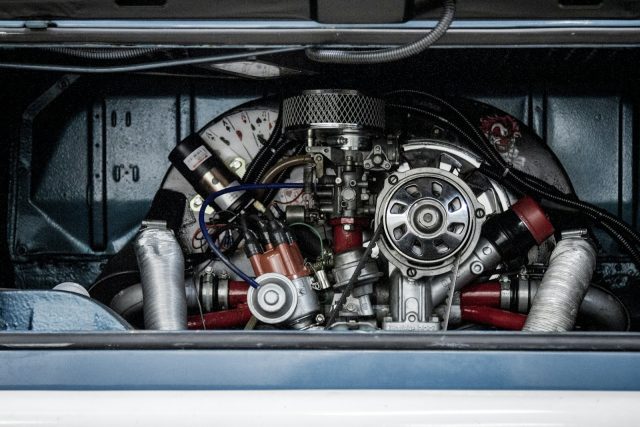
Identifying strong parts donors begins with a calm inspection of what remains functional after impact. A rear-end collision can destroy trunk panels and bumpers but leave the engine bay untouched — meaning the engine, transmission, radiator, and electrical harnesses often stay intact. A front-end crash reverses the pattern: the rear axle, suspension arms, and fuel tank may still be fully usable.
Certain vehicle types yield better returns when dismantled. Diesel trucks offer valuable engines and heavy-duty transmissions that stay in demand for years. Performance-oriented sedans and coupes hold premium suspension and brake assemblies that enthusiasts often seek out. Vehicles with high production numbers also make logical candidates; when there are many of a model still on the road, replacement demand for compatible parts stays steady. These patterns explain why such models frequently appear among salvage vehicles for sale and wrecked cars for sale at auto auctions.
Vehicle Condition Assessment for Parts Recovery
An experienced eye can evaluate a damaged car for sale without full disassembly. The first question is the type of damage. Fire destroys wiring, plastics, and seals well beyond visible burn marks. Flooding corrodes connectors and circuits even after drying. Collision damage, by contrast, tends to be localized,which often leaves large portions of the vehicle untouched.
Secondary effects must also be checked. A side impact that deployed multiple airbags eliminates those systems from reuse. A rollover could distort suspension geometry even if individual components appear straight. Many who buy wrecked cars mentally calculate the surviving value as they walk around a vehicle, dividing usable parts from those compromised by force or heat.
Mileage plays a lesser role for parts compared to whole-car resale. A high-mileage engine that still runs quietly may have solid value because many buyers seek replacements for even higher-mileage units. Hard components such as cylinder heads, valve covers, and crankshafts remain serviceable long after wear items fail.
Overall, the focus stays on function and accessibility. A vehicle described as “runs and drives” signals mechanical integrity and increases the odds of useful parts. Listings for accident-damaged cars for sale that note “engine start program” or “minor rear impact” often indicate profitable donors for dismantling.
Equipment and Space Requirements
Harvesting components doesn’t demand industrial-scale equipment. Basic mechanical tools — socket sets, wrenches, power drivers, and a hoist or cherry picker — cover most removal work. A flat workspace, some lighting, and a few sturdy racks handle the rest.
Storage, not disassembly, is usually the bottleneck. Engines and transmissions occupy valuable floor area; body panels require racks or vertical storage; smaller parts need bins and labeling systems. A well-organized space prevents damage and speeds retrieval later.
Climate control isn’t essential, but weather protection matters. Electronics corrode in humidity, upholstery molds, and exposed metal rusts. Covered storage or ventilated containers prevent degradation. Even tarps and pallets make a difference in preserving resale value.
Many dismantlers begin with modest setups — garages or rented storage units — and expand as inventory grows. The core principle remains the same: order, labeling, and safe access. Poor organization turns valuable components into unsellable clutter.
Disassembly Strategy and Documentation
Systematic disassembly protects both efficiency and safety. Large components such as engines, gearboxes, and seats come out first to open working space. Then technicians or hobbyists move to intermediate items — wiring harnesses, switches, brackets, and trim. Sheet-metal sections like doors, hoods, and fenders come last.
Each part should be labeled and photographed before removal. This practice supports accurate identification later and simplifies online listings or resale. Photos from multiple angles reduce uncertainty for buyers seeking exact matches.
Functional checks prevent disputes. Sensors, motors, and electronic modules should be powered briefly to confirm operation. Mechanical parts are inspected for cracks, corrosion, or leaks. Transparency about minor wear saves time and helps maintain credibility when parts circulate through secondary channels.
For parts from totaled cars for sale, detailed notes about condition, fitment, and part numbers preserve value. Even a small difference between model years can change compatibility, so written documentation becomes a crucial record long after the vehicle itself is gone.
Sales Channels and Market Dynamics
The aftermarket for used components depends on reliable data. Online platforms dominate because they connect small dismantlers with nationwide demand. Listings filtered by year, make, and model let buyers locate specific parts without proximity barriers. What once required visiting a junkyard now happens in a few clicks.
Pricing follows clear trends. Common replacement parts — alternators, starters, mirrors — maintain stable prices, while rare modules fluctuate with supply. A balance between quick turnover and margin optimization keeps operations sustainable. Parts that sit for months lose appeal even if priced attractively; sometimes moving inventory faster is the smarter choice.
Local mechanics remain steady customers. Independent repair shops often prefer original used components to cheaper aftermarket ones for fit and reliability. Regular supply relationships create a dependable outlet for dismantlers between larger online transactions. This symbiosis explains the steady flow of salvage vehicles for sale through auctions, even in slow economic periods — parts demand never stops completely.
Junk Cars For Sale as Parts Sources
Some vehicles have no future on the road but still contain plenty of value. Buyers often seek junk cars for sale, knowing that restoration is impractical yet dismantling is worthwhile. A vehicle with bent frame rails or missing body sections can still house thousands of dollars’ worth of functional systems.
Profitability comes from math, not luck. Suppose a unit costs $1,500 and yields $6,000 in parts value after 15 hours of work — that equation works. Another vehicle with extensive fire damage or deep flood exposure might contain little recoverable value despite a low purchase cost. Understanding which wrecked cars for sale meet the threshold for disassembly efficiency distinguishes professional dismantlers from casual hobbyists.
Auction descriptions reveal much. Phrases such as “runs and drives,” “minor front end,” or “rear damage only” point to solid candidates. Even among totaled cars for sale, those phrases indicate survivable mechanical systems that make harvesting practical. Conversely, listings that say “fire” or “burn” often signal unrecoverable interiors and wiring.
Component Categories and Value Hierarchies
Certain systems dominate value extraction. Engines and transmissions remain the backbone of profit, typically ranging from $1,000 to $5,000 depending on model and condition. Differentials, transfer cases, and axle assemblies contribute additional hundreds. These justify heavy lifting and detailed testing before resale.
Electronics have become the fastest-rising category. Infotainment modules, driver-assist sensors, and control units often retail for high amounts because many are VIN-coded and difficult to replace new. Buyers needing exact part numbers depend on the salvage network for availability.
Interior elements maintain steady turnover. Seats, dashboards, and trim panels replace worn or damaged originals at far less cost than dealer pricing. For many, sourcing such parts from damaged cars for sale represents the only affordable route to restoration.
Body panels also perform consistently in both retail and professional repair markets. Straight doors, fenders, and hoods save time for collision centers. Color mismatch rarely matters since repainting is standard practice. The demand for rust-free panels keeps supply moving even across regional lines.
End-of-Life Material Recovery
After sellable components are removed, remaining material still holds worth. Catalytic converters contain precious metals like palladium and platinum, commanding significant scrap prices. Aluminum wheels, wiring, and radiators can be separated for a higher per-pound value than mixed steel.
Efficient dismantlers segregate metals before sending shells to recyclers. Quick sorting between steel, aluminum, copper, and brass can yield several hundred dollars more per vehicle. Even crushed shells contribute final returns: a compact car body weighing 2,000 pounds still generates around $200–$400 in scrap steel value depending on market rates.
This stage completes the lifecycle. Every salvage vehicle for sale eventually ends in recycling once reusable parts are exhausted. The process supports sustainability by minimizing waste and feeding raw material back into manufacturing supply chains.
Why Parts Operations Stay Profitable
Part harvesting endures because modern automotive complexity keeps repair costs high. Replacement parts from manufacturers are expensive, and aftermarket alternatives often lack reliability. Used OEM components fill that gap. Vehicles written off as wrecked cars for sale become critical supply sources for maintaining the rest of the national fleet.
Car longevity reinforces this cycle. Many vehicles now exceed 200,000 miles of service, and as they age, owners increasingly rely on affordable used components rather than high dealer prices. That steady, practical demand keeps dismantling operations viable even when new car sales slow.
Those who buy wrecked cars strategically watch repair trends, part shortages, and production recalls. Recognizing which models hold long-term parts value — hybrids, diesel pickups, high-demand sedans — turns knowledge into predictable returns. Over time, this discipline, not chance, defines why the parts sector remains a consistent and necessary layer of the broader automotive economy.










